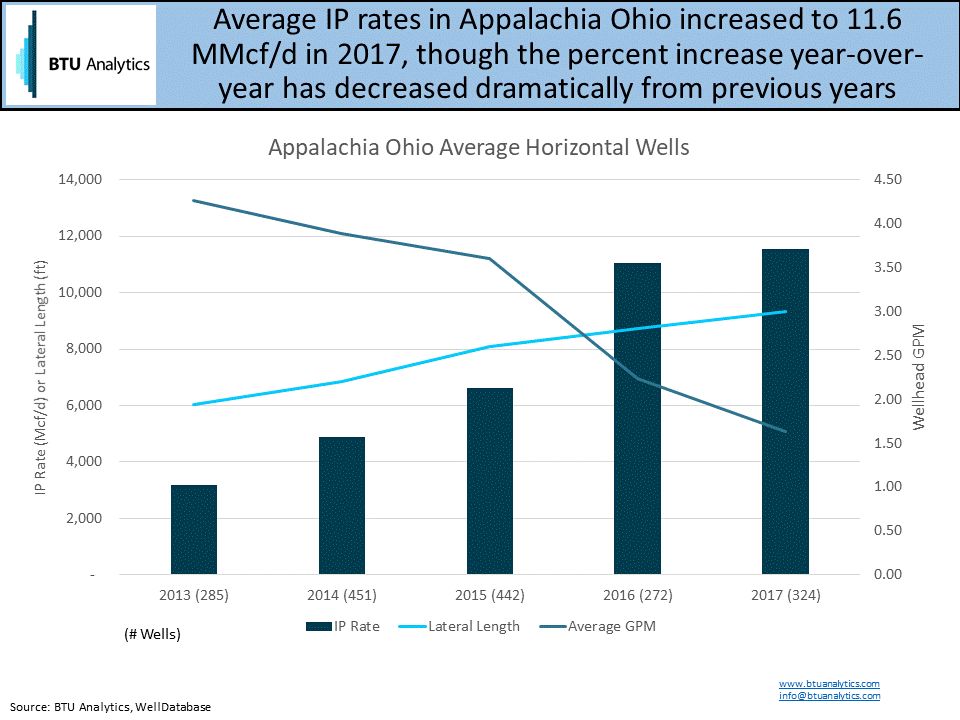Continuous gains in Appalachia Ohio well productivity year-over-year have been a given over the past few years, but data from 2017 may start to show a shift in this trend. Ohio’s well-level production data is released quarterly, with 4Q17 published last month, meaning we now have a more complete picture of how productivity trended throughout 2017. The last half of 2017 was particularly interesting in the region, given several large takeaway pipeline projects became operational, namely Rover, CGT Rayne, and several TETCO backhauls, so we anticipated highly productive dry gas wells would likely come online to help fill this capacity. Average IP rates for horizontal wells in Appalachia Ohio did increase year-over-year, up about 5% to average 11.6 MMcf/d in 2017. However, this growth is much less than previous years; average IP rates increased nearly 70% from 2015 to 2016. This slowdown in the rise in average IP rates is despite a continued increase in average lateral lengths, as seen in the figure below.

One factor contributing to this is the shift in drilling activity from wet to dry portions of the play, which significantly occurred starting in 2015 with the fall in liquids prices. BTU models well-level wellhead GPMs, and there has been a clear decrease in average GPM since 2015, as shown above. The large increase in the average IP rate from 2015 to 2016 was likely driven by the large shift to target dry portions of the play that occurred in that time frame. Average IP rates for dry wells are much higher than that for wet wells, and the relative percent of dry wells increased to over 60% in 2016 from 38% in 2015, as seen in the figure below. This continued to increase to 74% in 2017, though the big jump was from 2015 to 2016.

As oil prices and thus liquids prices remain strong, the wet portion of the play is becoming more economically attractive, meaning producers may start to move back into the wet regions. This would likely result in a decrease in the average IP rate for the region. How well productivity continues to trend is critical from a production forecasting standpoint, as lower overall average IP rates mean that more wells will need to turn online to support a given production level. With over 7 bcf/d of new pipeline takeaway capacity still on the horizon from Southwest Appalachia over the next few years, how productive new wells are, coupled with the level of drilling activity, will determine how quickly production increases with this new capacity. To keep up to date on production trends in Appalachia as well as the rest of the US, check out the Upstream Outlook and the Northeast Gas Outlook.









